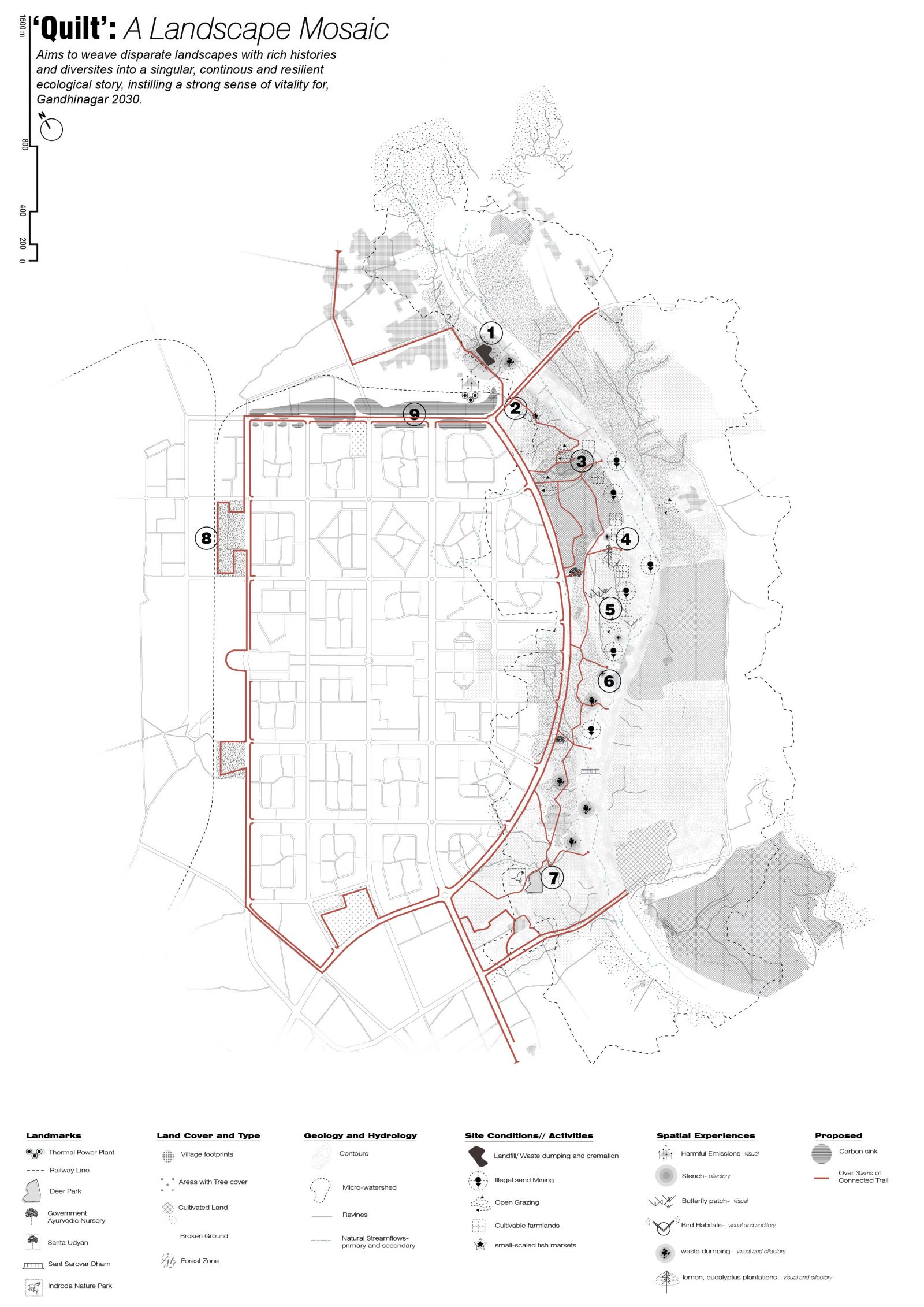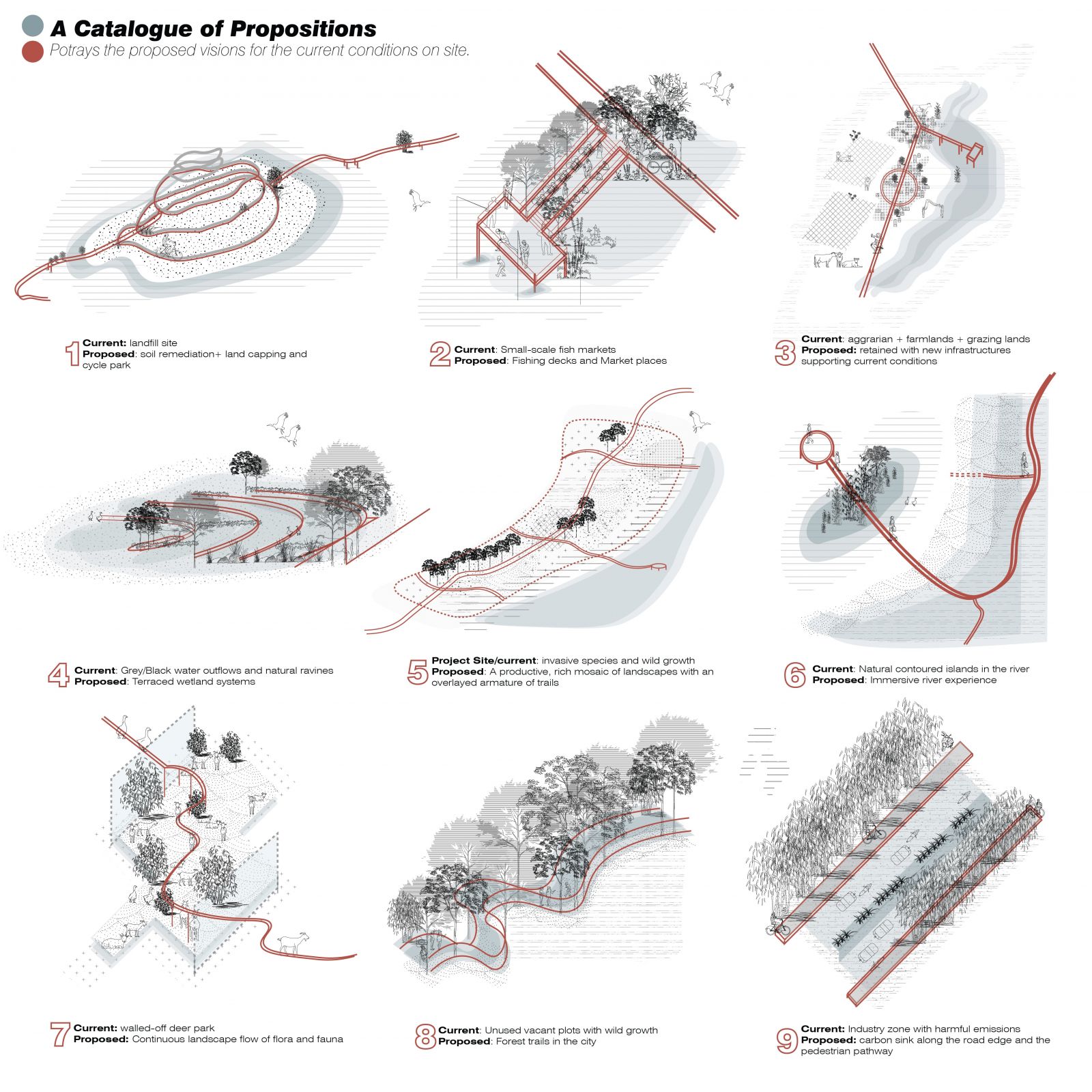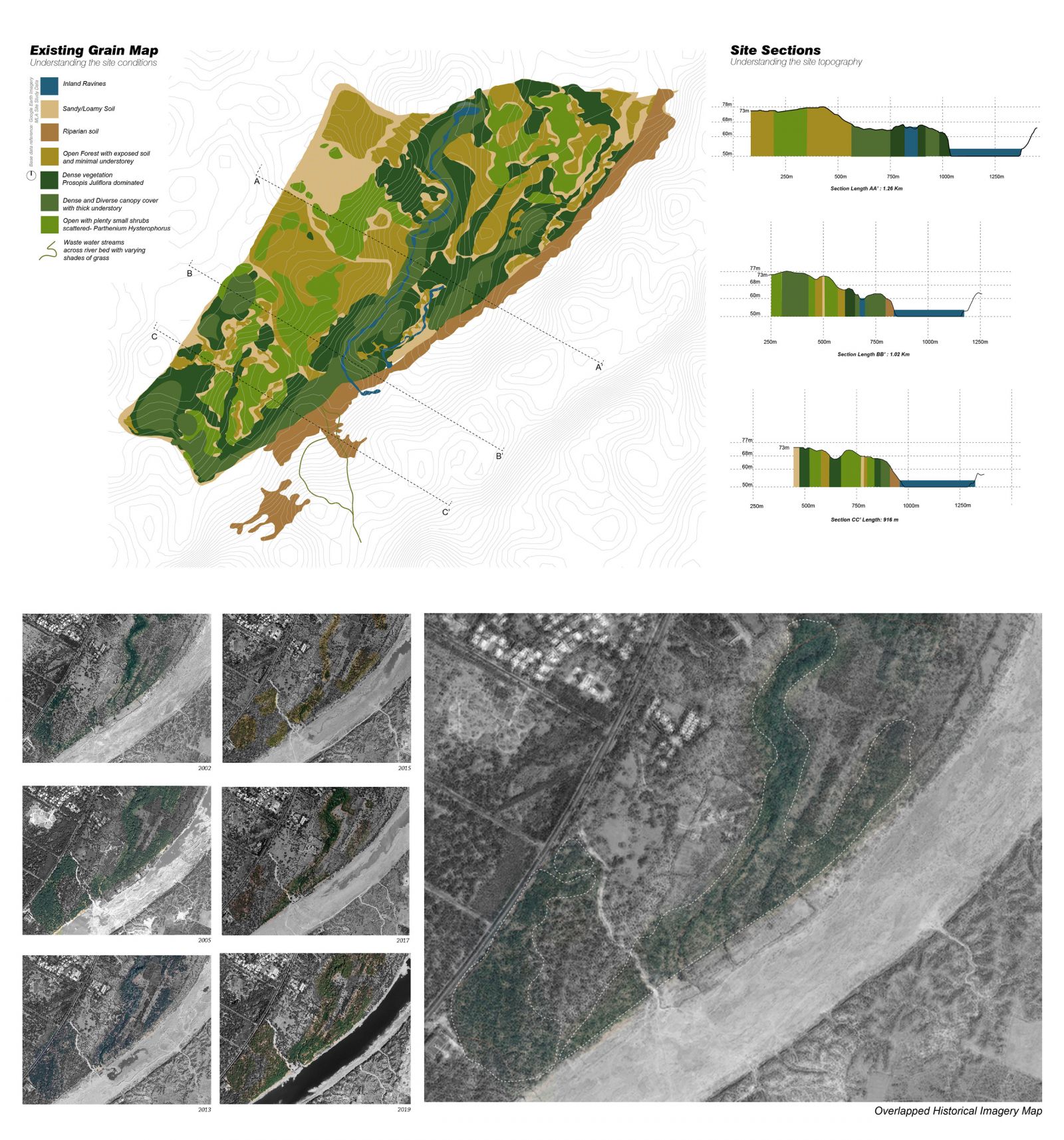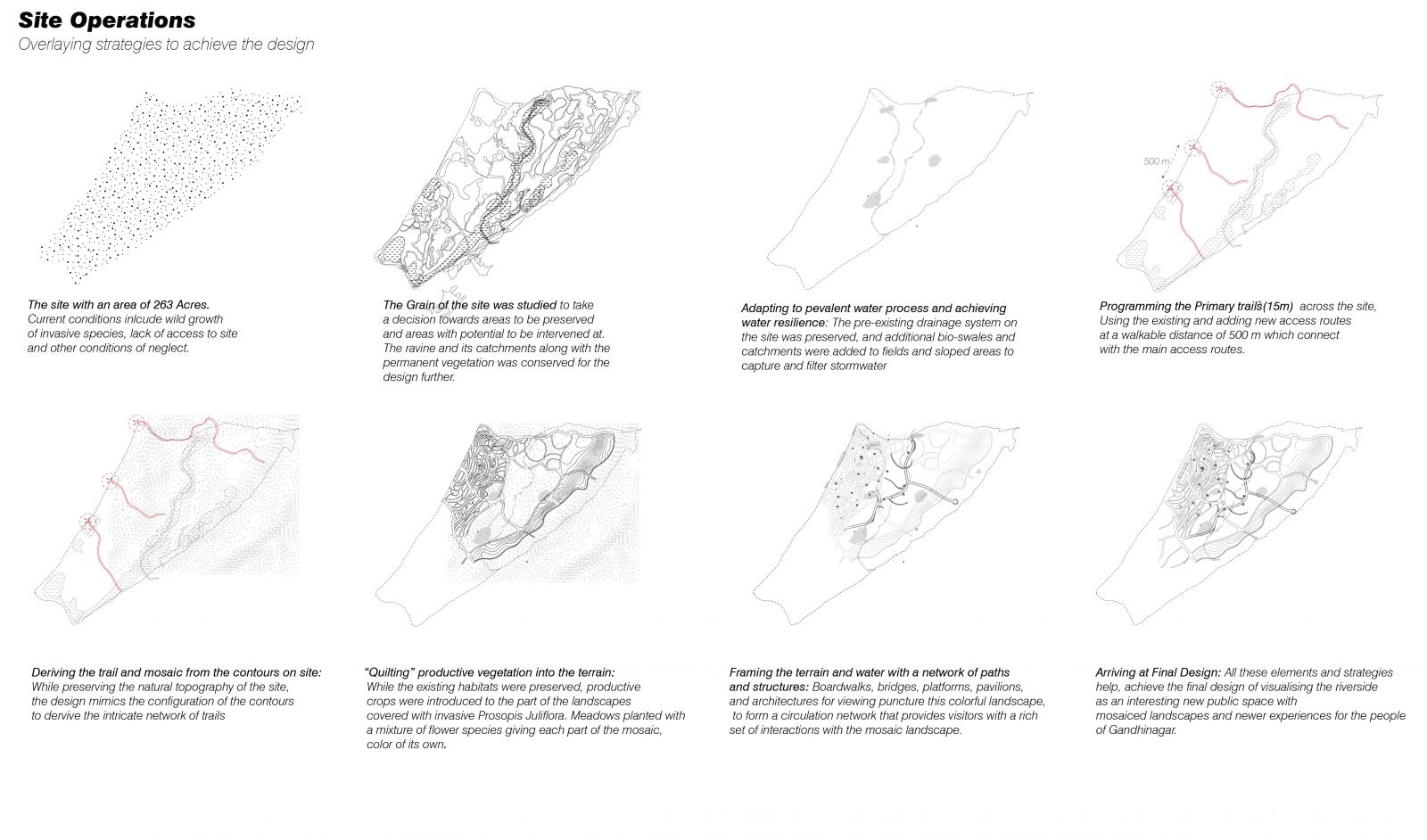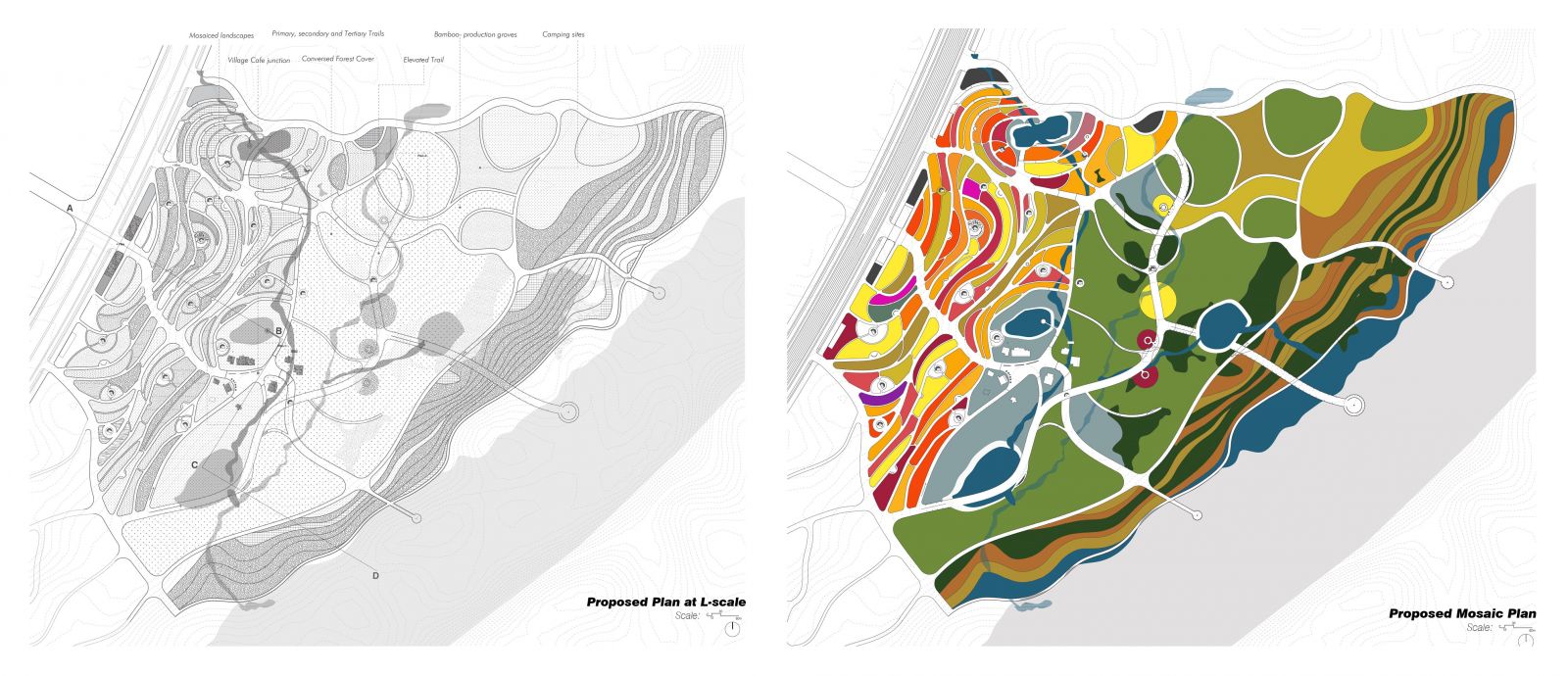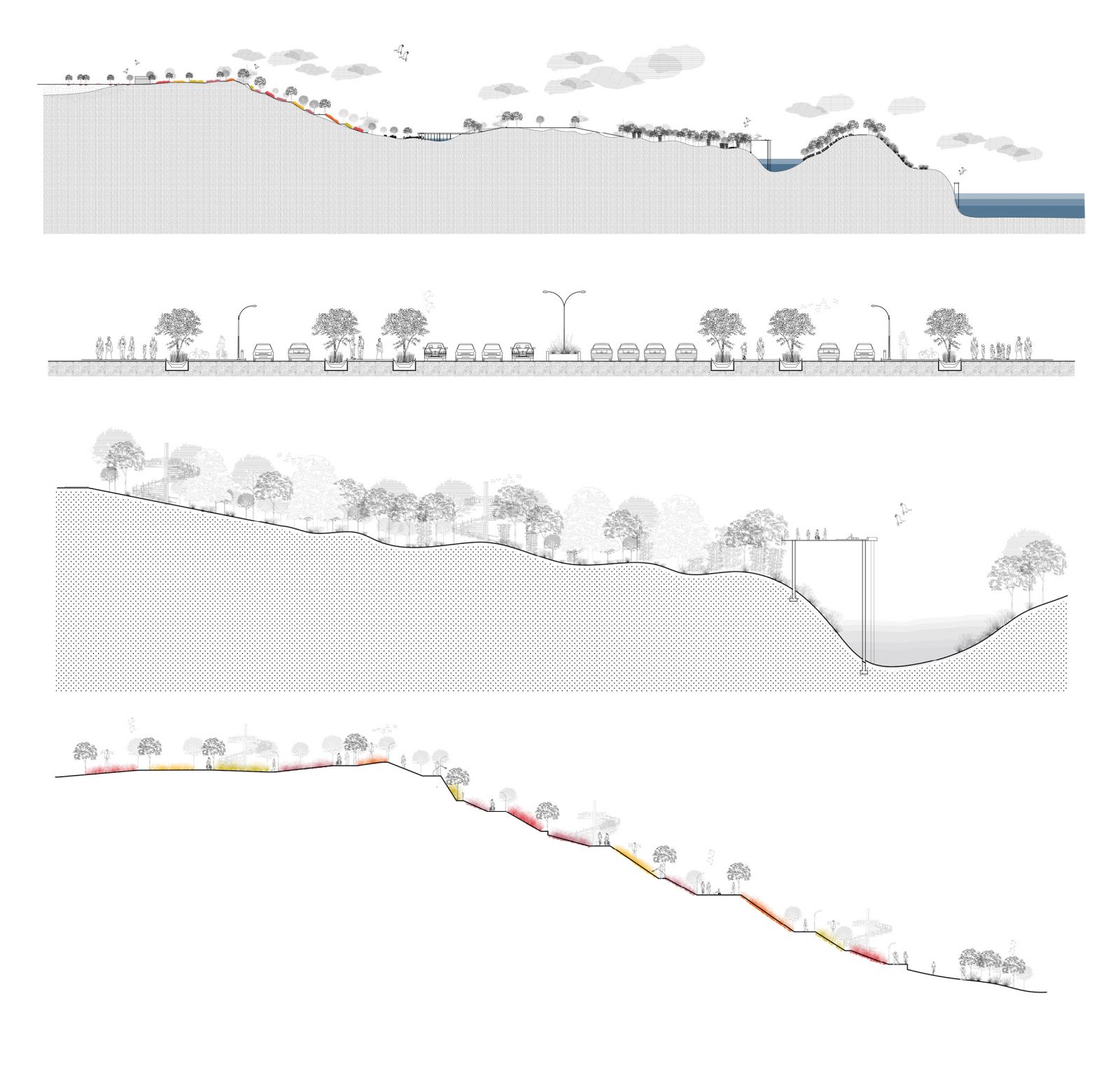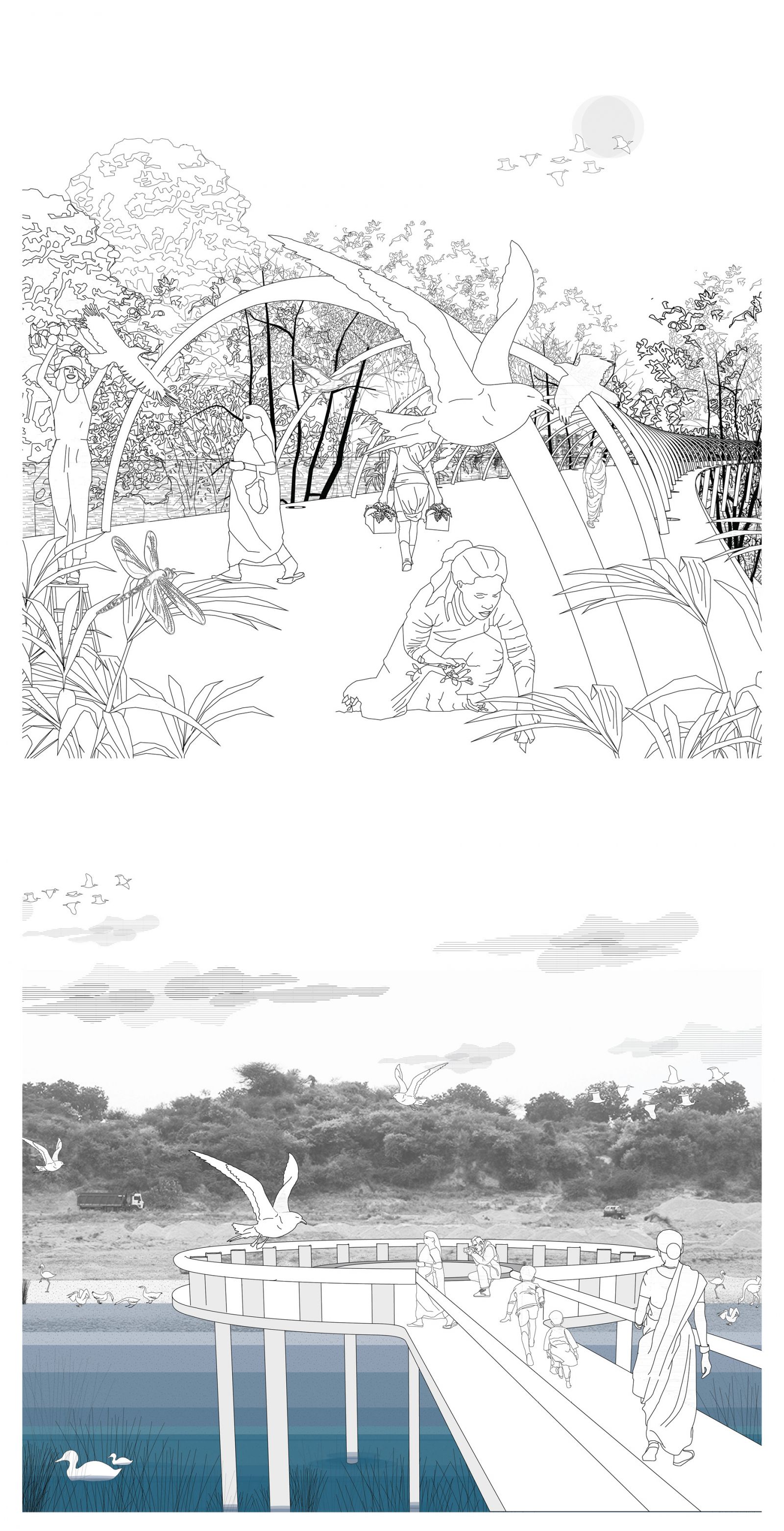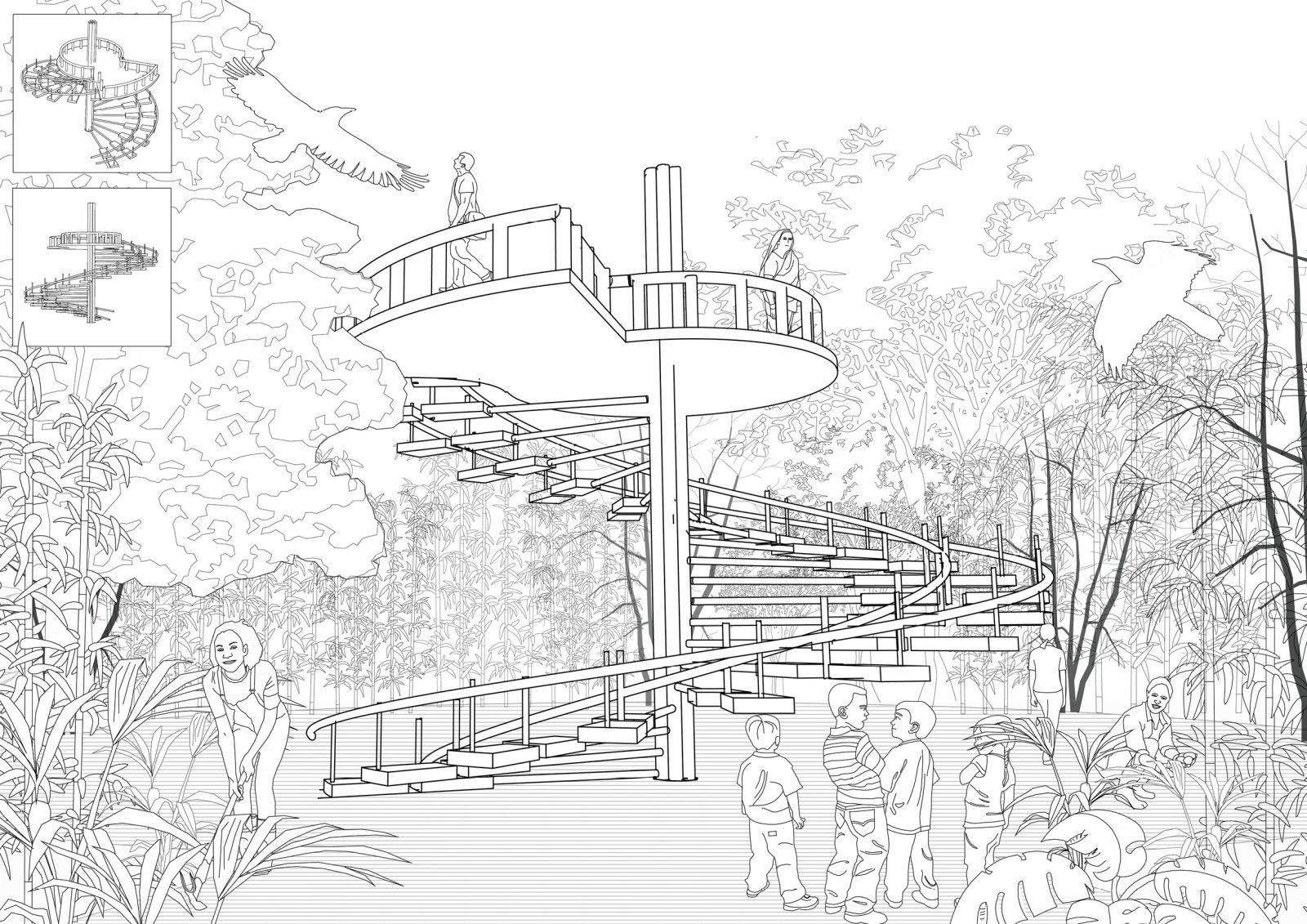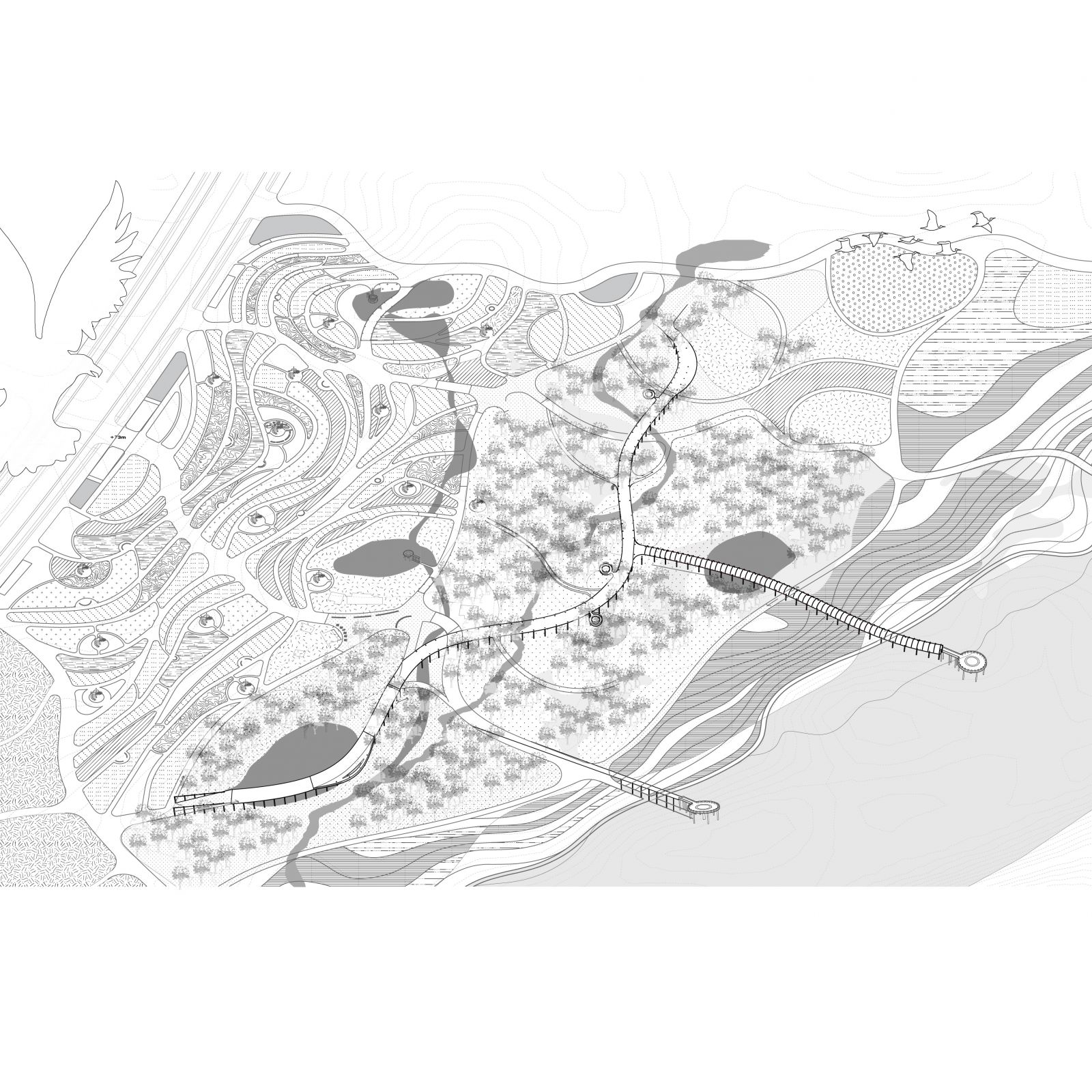Your browser is out-of-date!
For a richer surfing experience on our website, please update your browser. Update my browser now!
For a richer surfing experience on our website, please update your browser. Update my browser now!
The project 'Quilt' envisions a cohesive and integrated public realm along Gandhinagar's riverside with a continuously connected pedestrian and bicycling network. It transforms one part of the quilt (a wasteland) into a dynamic Urban Forest Park. This design incorporates a variegated mosaic landscape, along with forests that are conserved and crisscrossed by pedestrian trail networks. An elevated trail is also designed with platforms, sitting areas, viewing decks to create visual and multi-sensory experiences. The elevated path passes through diverse zones offering different vantage points to view and also be in the canopy of dense forests. The landscape zones are programmed to give citizens places for foraging or walking through wildflowers, bamboo groves, or harvesting edible plants as well social programs such as camping sites. By integrating disparate elements of the riverside, it can achieve both a productive mosaic landscape and a bio-diverse corridor. The proposal does all this while preserving the natural and cultural patterns and processes of the site, linking it to the larger context of the entire river edge.
View Additional Work